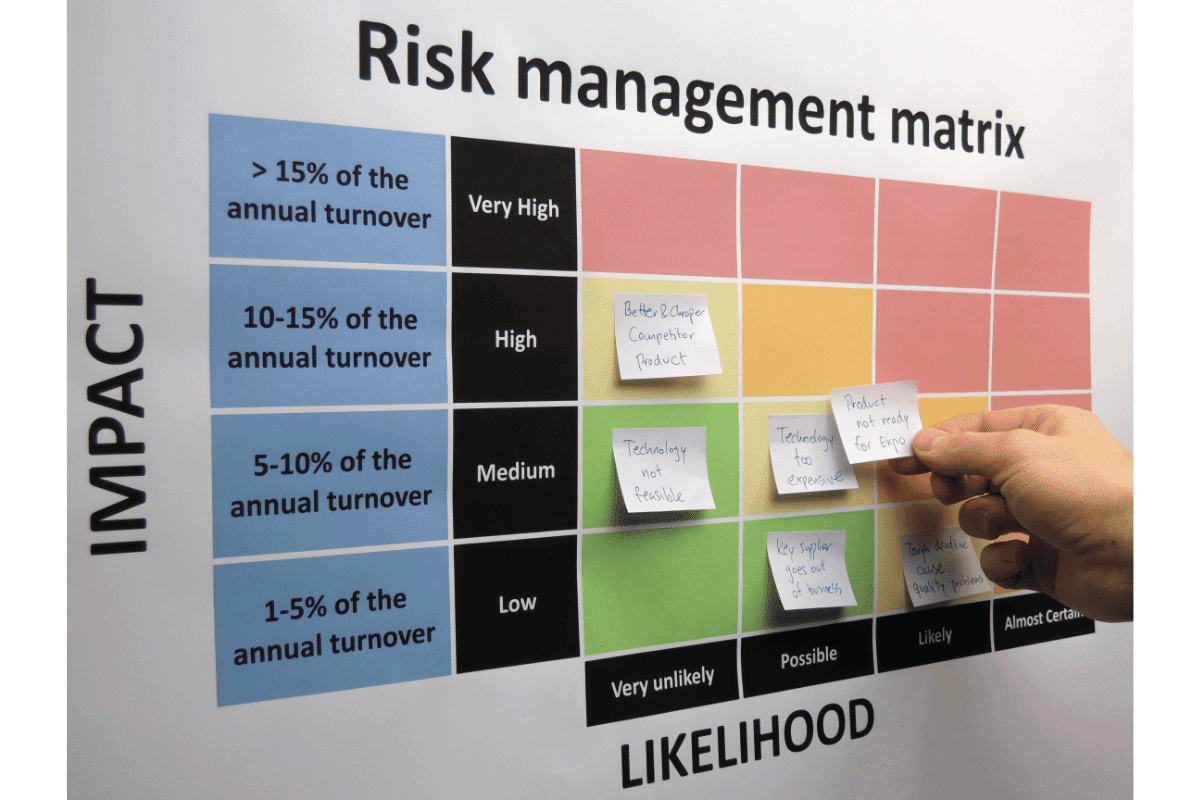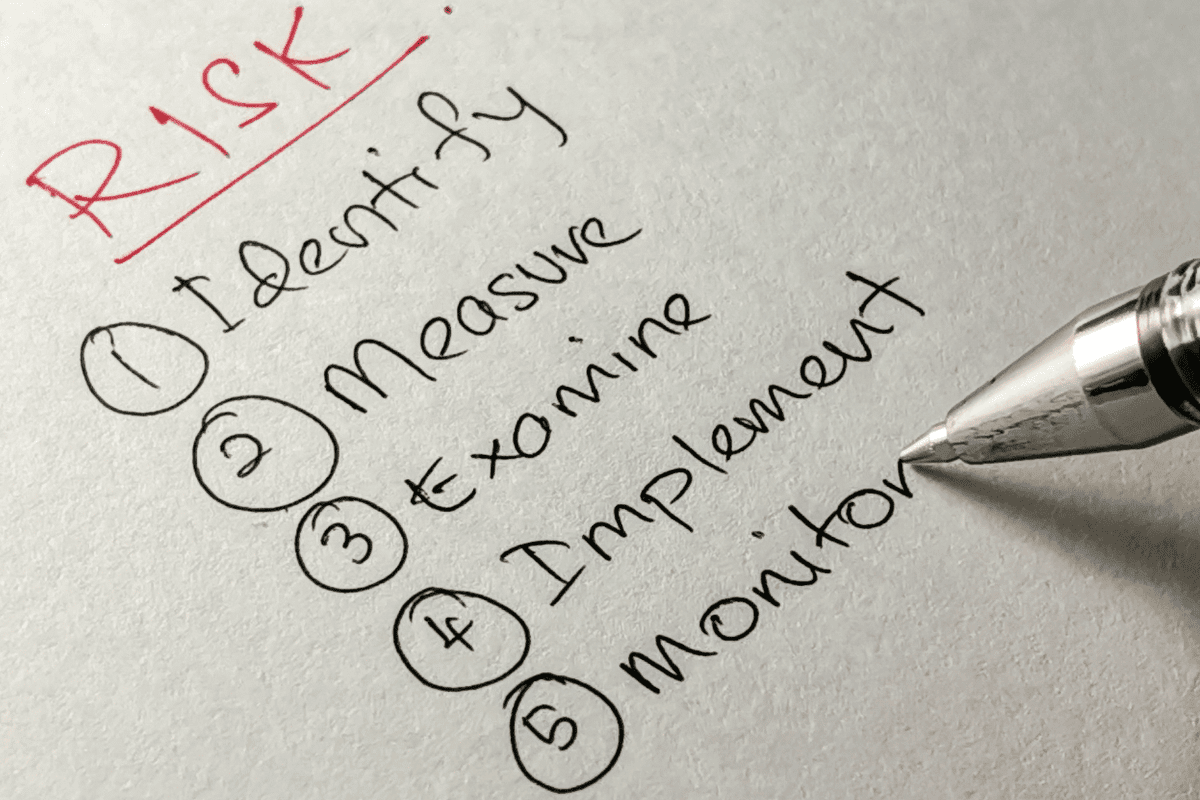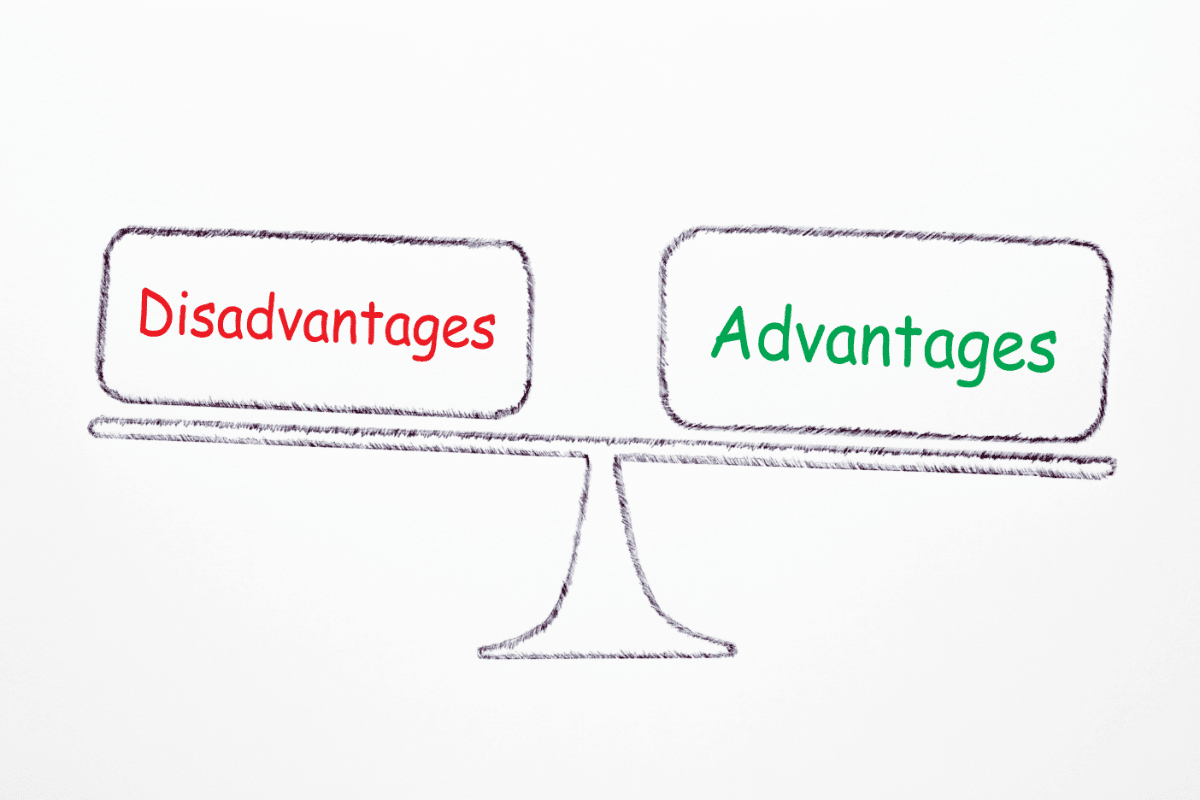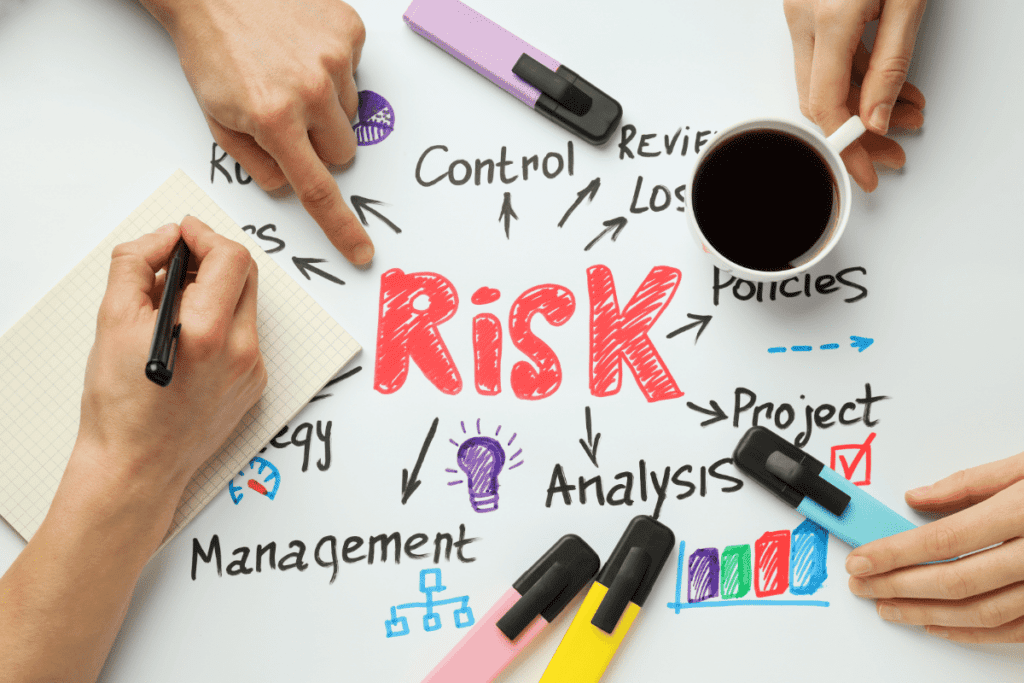Why Is Project Risk Management Important for Project Success?
Venturing through the unpredictable journey of project risk management often feels akin to sailing a ship amidst churning seas. It’s familiar territory for me—after captaining numerous projects, I recognize that risk lurks like an unseen current, ready to push us off course at a moment’s notice.
But diving headfirst into the depths of project risk management has surfaced a lifeline filled with strategies and methodologies that are vital for steering your projects toward the safe harbor of success.
Together, let’s unfurl the sails and chart a course through any potential storms—risk management doesn’t have to be a mystery when we tackle it as seasoned navigators!
Key Takeaways
- Project risk management helps us know what could go wrong and plan for it. This way, we can keep our projects on time and within budget.
- Using tools like Kanban boards, Risk Heat Maps, and Gantt charts help us see risks better and make good plans to handle them.
- When we watch our project closely and respond fast to risks, we stop small problems from becoming big ones. This keeps the project moving smoothly towards success.
Why Project Risk Management is Essential for Success?

Project Risk Management is crucial for safeguarding the successful completion of any project. By identifying and addressing potential risks, project managers can minimize the likelihood of failure and ensure that the project stays on track towards its objectives.
This proactive approach to risk management is key to ensuring that projects are completed within scope, budget, and schedule.
The Concept of Project Risk
Picture this: you’re leading a project, and suddenly things take a turn. Maybe materials don’t arrive on time or the weather messes with your schedule. That’s project risk for you—it’s all about the chance that something unexpected could shake up your plans and maybe even cause trouble for your project’s success.
It pops up in every kind of job, from building houses to launching new tech.
Now let me tell you, tackling these bumps in the road is part of why I’m here. Risks are like puzzle pieces, and I spot them before they slot into place the wrong way. We’ve got tools to measure how big a deal each risk might be and strategies ready to keep any surprises from causing too much fuss.
Just think—knowing what could go sideways helps us stay one step ahead. And hey, sometimes risks can bring opportunities too! So we stay sharp, look out for those twists and turns, and make sure our projects cross the finish line smoothly.
Minimizing Potential Project Failures
Managing risks well means we can stop big problems before they happen. Think about what might go wrong in a project. Then make plans to handle those things if they pop up. It’s like having an umbrella ready in case it rains.
I take this seriously because I’ve seen projects hit trouble that could have been avoided. And trust me, fixing issues on the fly is way harder than being prepared from the start! We want our projects to end well, right? So tackling risks early matters a lot for our success.
Now let’s talk about how we actually do risk management. This is where we roll up our sleeves and get into action..
The Importance of Risk Management in Project Success
I think about all the projects I’ve worked on, and one thing stands out. Risk management really is a game-changer for making sure everything goes well. It’s like having a map in a maze; it guides us through twists and turns we might not see coming.
We plan for risks before they happen, so we don’t get caught off guard.
Imagine building something without knowing what could go wrong – it’s pretty risky! But with good risk management, we can catch problems early. This means our projects stay on track to finish on time and stick to the budget.
And let’s not forget quality—it helps make sure that what we build is just how we want it.
What is the Process of Project Risk Management?

The project risk management process involves identifying, prioritizing, and assigning owners to potential risks, analyzing the impacts of these risks, monitoring them throughout the project lifecycle, and responding effectively when they occur.
It is crucial for successful project completion as it allows for proactive mitigation of potential threats and maximization of opportunities.
Identifying the Risks
I know how tricky it can be to spot everything that could go wrong with a project. Identifying risks is like being a detective looking for clues about what might trip us up.
- First, we need to sit down and think about what could possibly happen to mess up our project. It’s all about asking, “What if this or that goes wrong?”
- We check past projects for anything that caused problems before. History often repeats itself, and we can learn lots from old mistakes.
- Talking to everyone involved is super important. Team members, stakeholders, even customers – they all offer different views on potential risks.
- Look at the big picture and small details too. Sometimes a tiny thing can lead to a big problem if we’re not paying attention.
- Understand our project inside out – the more we know, the better we’ll be at seeing where things might go south.
- Keep an eye on what’s happening around us. Changes in laws, weather, or even new tech can all affect our project in ways we didn’t expect.
- Use tools like risk registers or software designed for spotting trouble. They help us organize our thoughts and keep track of risks as we find them.
- Always think ahead about what changes could come our way. Planning for the future helps us get ready for anything that may pop up unexpectedly.
Prioritizing the Risks
Prioritizing the risks is crucial for successful project completion. It helps in focusing on the most critical areas that could impact the project’s objectives. Here are the key steps for prioritizing risks:
- Assessing the likelihood and potential impact of each risk to understand its significance.
- Developing strategies to mitigate or avoid high – priority risks, ensuring that they are addressed effectively.
- Implementing and monitoring risk management strategies to stay proactive and responsive to potential threats.
- Reviewing and updating risk management strategies regularly to maintain an accurate assessment of priorities.
- Utilizing risk management strategies such as risk avoidance, reduction, transfer, and acceptance based on the prioritized risks.
Assigning an Owner to the Risk Management
Assigning an owner to the risk management process is crucial. It ensures someone is responsible for monitoring risks and taking necessary actions. This person oversees the risk management plan and keeps it up-to-date as the project progresses, ensuring nothing falls through the cracks.
Monitoring risks and taking action promptly can prevent potential issues from turning into major problems, helping to keep the project on track towards successful completion. Regular review of the risk management plan allows for adjustments as new risks emerge or existing ones evolve.
With a dedicated owner in place, the project team can have confidence in addressing any challenges that come their way.
Analyzing the Risk Analysis
After assigning an owner to the risk management, the next crucial step is analyzing the risk analysis. This involves thoroughly assessing the identified risks and their potential impacts on the project. Here are some key aspects to consider in this process:
- Evaluate the Probability and Impact: Determine the likelihood of each risk occurring and its potential consequences on project objectives.
- Assess Risk Triggers: Identify specific events or circumstances that may indicate when a particular risk is about to materialize.
- Review Risk Response Strategies: Examine the effectiveness of proposed action plans for addressing different types of risks and adjust strategies as needed.
- Consider Interdependencies: Analyze how certain risks may be interconnected and influence one another within the project environment.
- Update Risk Register: Regularly review and update the risk register with any new information regarding identified risks or changes in their status.
Monitoring the risks
Monitoring the risks is crucial for staying ahead of potential issues during the project. It involves regularly checking in on identified risks to assess any changes or new developments that may affect the project. Here are some key actions to take when monitoring project risks:
- Regularly review and update the risk register to ensure all identified risks are current and relevant.
- Monitor risk triggers to promptly recognize when a risk is about to occur or has already occurred.
- Keep an eye on external factors that could impact the project, such as market changes, regulatory updates, or technological advancements.
- Communicate with stakeholders about any updates or changes in the risk landscape, ensuring everyone is aware and prepared.
- Assess the effectiveness of risk responses and adjust them if necessary to address any evolving risks.
Responding to the Risks
Responding to the risks is a crucial part of effective project risk management. When potential risks are identified, it’s important to have a plan to respond to them in order to minimize their impact. Here are the steps for responding to the risks:
- Develop detailed action plans for each identified risk, outlining specific steps to be taken if the risk occurs.
- Assign responsibilities for implementing the response plans, ensuring that there is clear ownership and accountability.
- Communicate the response plans to all relevant stakeholders, ensuring that everyone understands their role in mitigating the identified risks.
- Regularly review and update response plans as needed, considering any changes in project scope or external factors that may affect the risks.
- Implement proactive measures to prevent or reduce the likelihood of risks occurring, such as additional quality control measures or contingency planning.
- Continuously monitor the effectiveness of the response plans and make adjustments as necessary to address new information or changing circumstances.
- Document all responses and outcomes for future reference and learning, creating a repository of best practices for managing similar risks in future projects.
What are the Advantages of Project Risk Management

Project risk management offers numerous benefits, including maximizing opportunities, mitigating potential threats, and enhancing project success. To learn more about the advantages of project risk management, keep reading!
Enhancing the success of the project
Proper risk management is vital for project success. It can help improve predictability in completing a project on time and within budget, leading to stronger relationships with sponsors, stakeholders, and team members.
Research has shown that failed software projects could have been avoided or reduced if there had been early concern with identifying and resolving high-risk elements. Effective risk management offers practical benefits by ensuring the smooth progress of a project while maximizing opportunities and minimizing potential threats.
The benefit of risk management is essential for the success of any project. It helps in improving decision-making, ensuring project continuity, and mitigating potential risks that could impact the project’s success.
Mitigating potential project threats
Mitigating potential project threats is crucial to ensure the smooth progression of a project. It involves identifying and addressing risks that could potentially derail the project.
By implementing risk management strategies, we can anticipate and prepare for potential hazards such as budget overruns, schedule delays, or resource shortages. This proactive approach not only minimizes the negative impact of unforeseen events but also fosters a sense of confidence and control within the project team.
Effective risk management planning means continuously monitoring and responding to potential threats as they arise. It allows us to take preemptive measures to prevent or mitigate these risks before they escalate into significant issues affecting the overall success of the project.
Maximizing opportunities
By effectively managing project risks, we not only mitigate potential threats but also maximize opportunities for success. A comprehensive risk management strategy allows us to identify and capitalize on potential advantages that may otherwise go unnoticed.
This proactive approach empowers us to harness positive uncertainties, seize advantageous market conditions, and make informed decisions that lead to the successful completion of our projects.
Embracing risk management isn’t just about avoiding pitfalls; it’s about creating a roadmap for opportunity exploration and strategic decision-making that aligns with the overall goals of the project.
Maximizing opportunities ensures we don’t just navigate challenges but also actively seek out avenues for growth and success within our projects. It empowers us to leverage favorable conditions, adapt to changing circumstances, and capitalize on unforeseen openings in the market or industry landscape.
Improved decision-making
Improved decision-making is key to successful project management. By understanding and managing risks effectively, we can make better-informed decisions. This ensures that our projects stay on track and meet their objectives.
Additionally, it helps us anticipate potential challenges and take proactive steps to mitigate them, leading to smoother project execution.
Effective risk management also allows us to identify opportunities for improvement and growth within the project. By analyzing potential risks, we can make strategic decisions that maximize these opportunities while minimizing negative impacts.
Ensuring project continuity
With improved decision-making, project continuity becomes more achievable. Effective risk management is crucial for ensuring project continuity and success. It helps in anticipating and preparing for potential problems before they occur, leading to better-informed decisions and effective responses to unexpected events.
This increases the odds of project success while alleviating anxiety. By identifying, prioritizing, monitoring, and responding to risks, we can ensure that our projects stay on track despite any challenges that may arise along the way.
What Tools are Effective for Risk Management in Project Management?

Effective tools for project risk management include Kanban Boards for managing and prioritizing risks, Risk Heat Maps for visualizing data, and Gantt charts for creating and monitoring risk management plans.
To learn more about these tools and how they can benefit your project, keep reading!
Use of Kanban Boards for managing & prioritizing risk
I’ve found that the use of Kanban boards is really effective for managing and prioritizing risks in an agile environment. These boards allow you to visually track and prioritize risks, which can lead to better decision-making.
You can also customize tags on these boards to identify specific risks within your projects, making it easier to visualize and organize the process of identifying and mitigating risks.
This visual approach can be especially helpful for project professionals as it provides a clear and structured way to handle potential risks.
Risk Heat Maps for Data Visualization
Risk heat maps are a powerful tool in project risk management , particularly in the risk assessment phase. . As a visual representation of the likelihood and impact of risks, they provide a clear and easy-to-understand overview of potential threats to the project.
By using color-coding and visual cues, risk heat maps allow project managers and team members to quickly identify and prioritize risks based on their potential impact and likelihood of occurrence.
This enables swift decision-making and effective risk management strategies.
When it comes to understanding the importance of project risk management, utilizing tools like risk heat maps can significantly enhance our ability to proactively address potential threats.
Utilization of Gantt charts for risk management plans
Gantt charts are mighty tools for managing risks in projects. They provide a visual timeline of project tasks, making it easier to plan and allocate resources effectively. With Gantt charts, we can clearly see the project schedule, which aids in identifying potential risks and allocating time for risk response activities.
Additionally, they allow us to set realistic deadlines and monitor progress against them over time. This way, we can proactively adjust our strategies if any risks arise during the project’s execution.
Moreover, Gantt charts enable us to prioritize tasks efficiently, ensuring that high-risk activities receive adequate attention throughout the project lifecycle. By utilizing Gantt charts for risk management plans, we gain better control over project timelines and are able to implement mitigation strategies accordingly – keeping potential threats in check while maximizing opportunities for successful project completion.
FAQs
1. What is project risk management?
Project risk management is the process where you find, assess, and get ready for any dangers that could mess up your project’s success.
2. Why do successful project managers care about risks?
Successful project managers know that finding and getting ready for risks can stop big problems before they happen, keeping a construction project or any task on track.
3. Can risk management help me make better decisions?
Yes! When you manage risks by doing what-if analysis and looking at all possibilities, you’re able to make smarter choices to guide your team through trouble safely.
4. How does identifying risks early help my project?
Identifying risks early with tools like sensitivity analysis means less surprise danger later on—it’s like having an emergency plan so your project won’t fail if something goes wrong.
5. What are some ways I can reduce risk in my projects?
You’ve got options! You can transfer the risk using insurance, lower it by changing plans with a risk response plan, or keep an eye on things with regular checks to stay safe from disasters natural or man-made.
6. Is there a standard way to handle risk in projects?
Sure thing—organizations like ISO offer guidelines known as ISO 31000; It teaches you how to spot troubles before they grow big and hurt your work or reputation.
Conclusion
In conclusion, project risk management is crucial for successful project completion. It helps in identifying and preparing for potential problems, making informed decisions, and keeping the project on track.
Effective risk management also improves predictability, builds strong relationships, and increases the chances of project success. With the right strategies and tools, project managers can alleviate anxiety and increase overall project success rates.
If you liked this article, remember to subscribe to MiamiCloud.com. Connect. Learn. Innovate.






